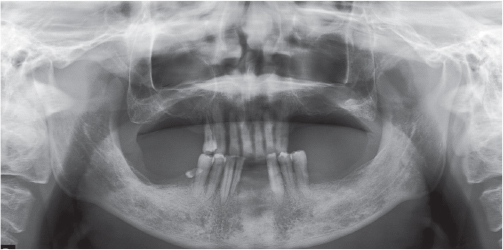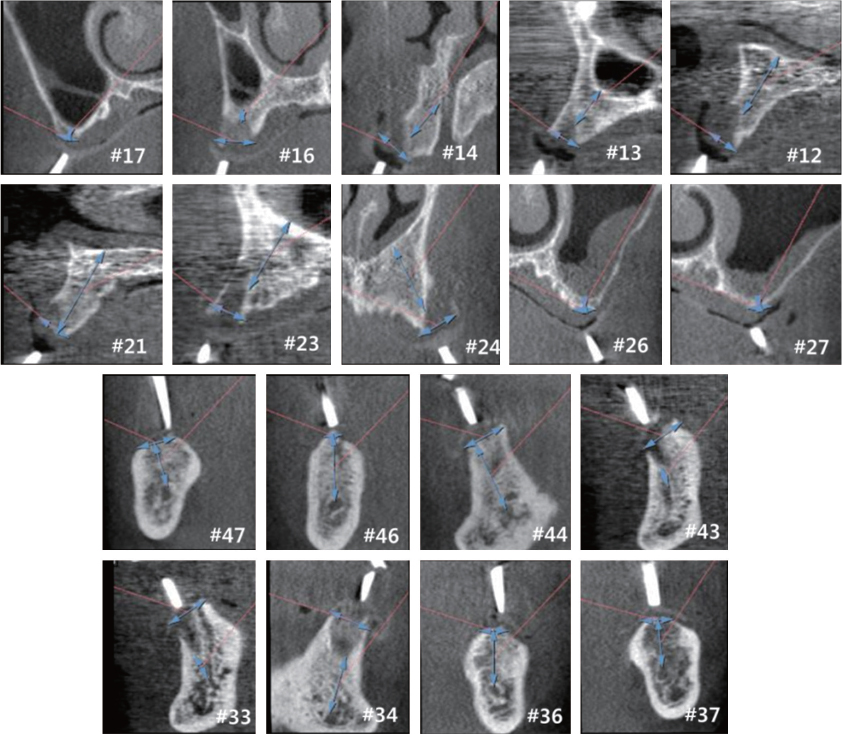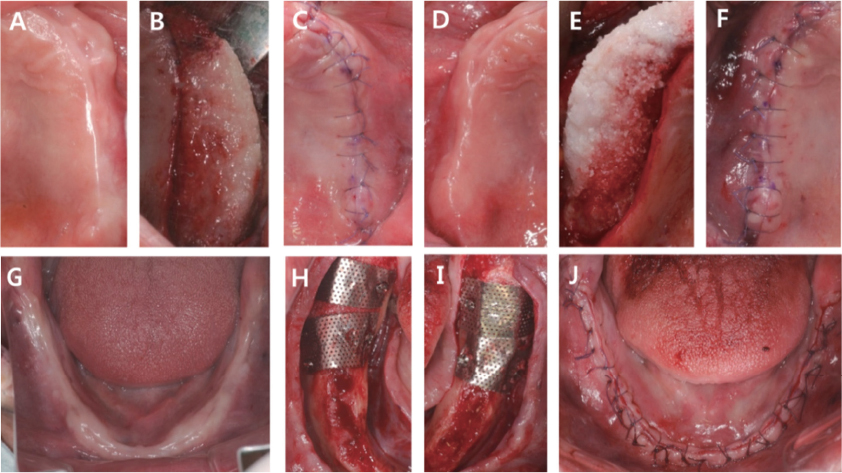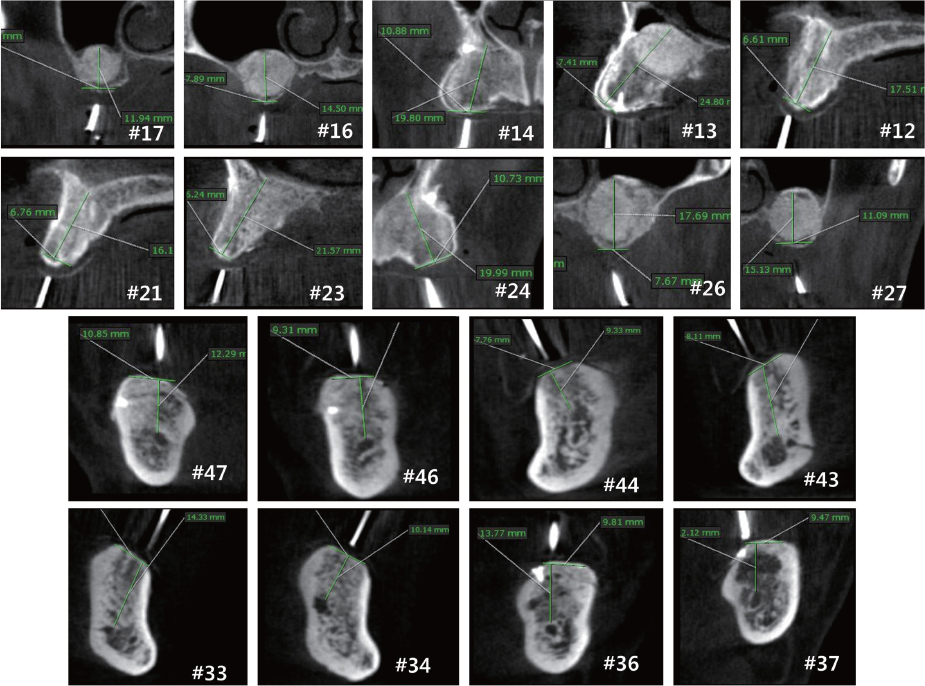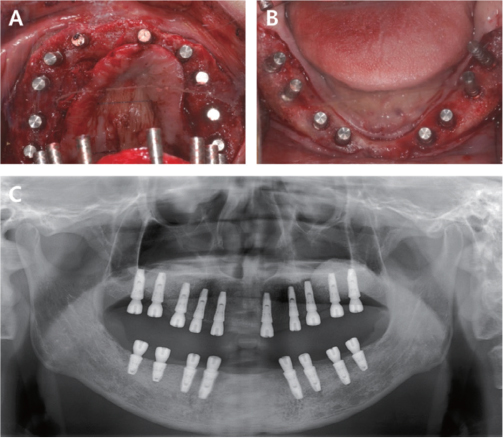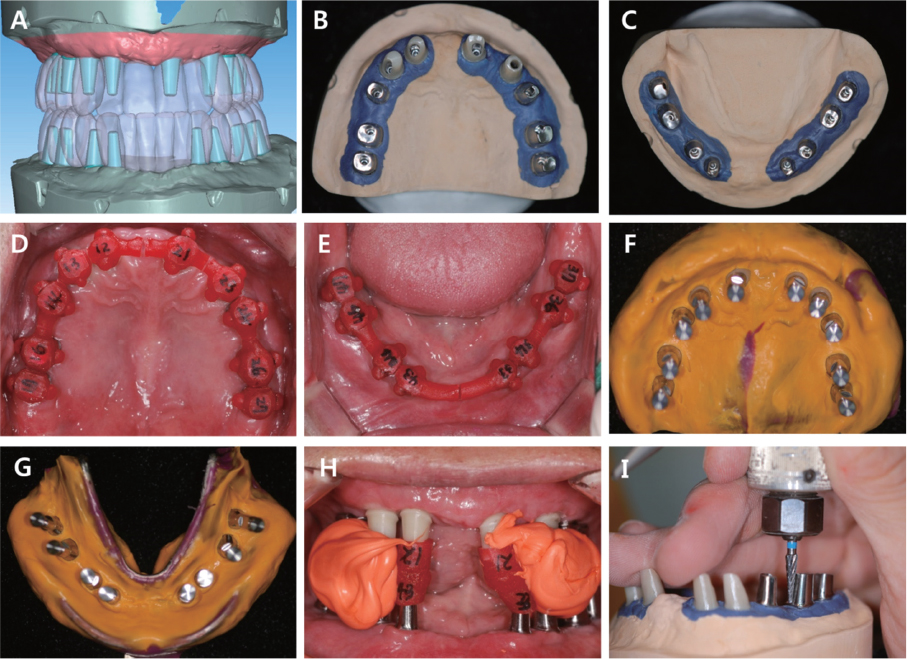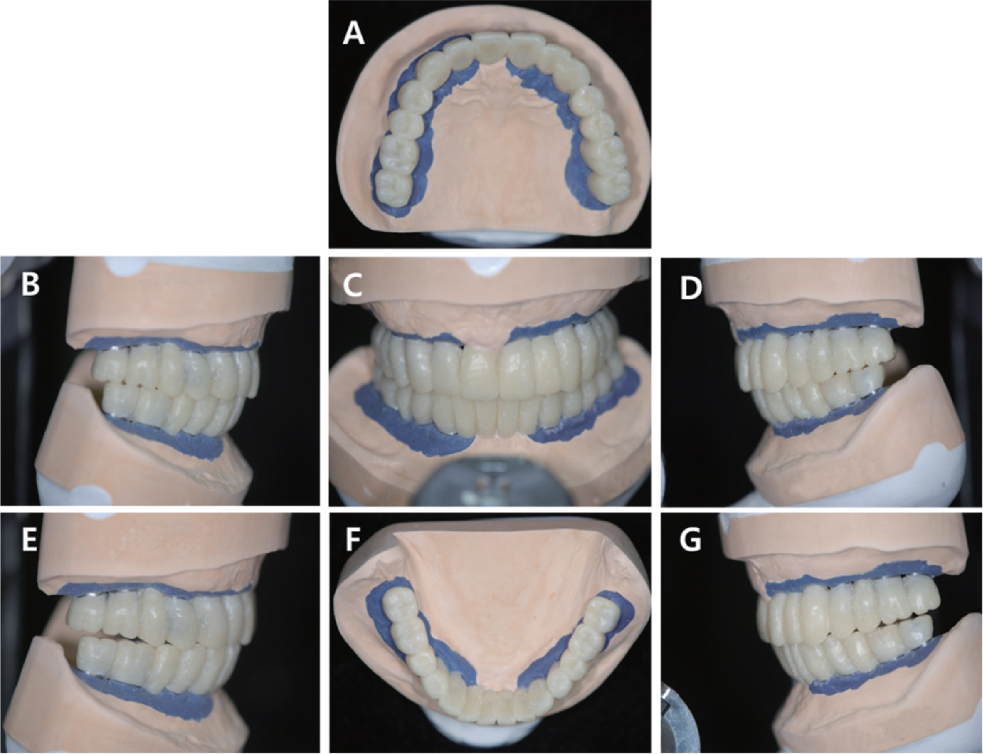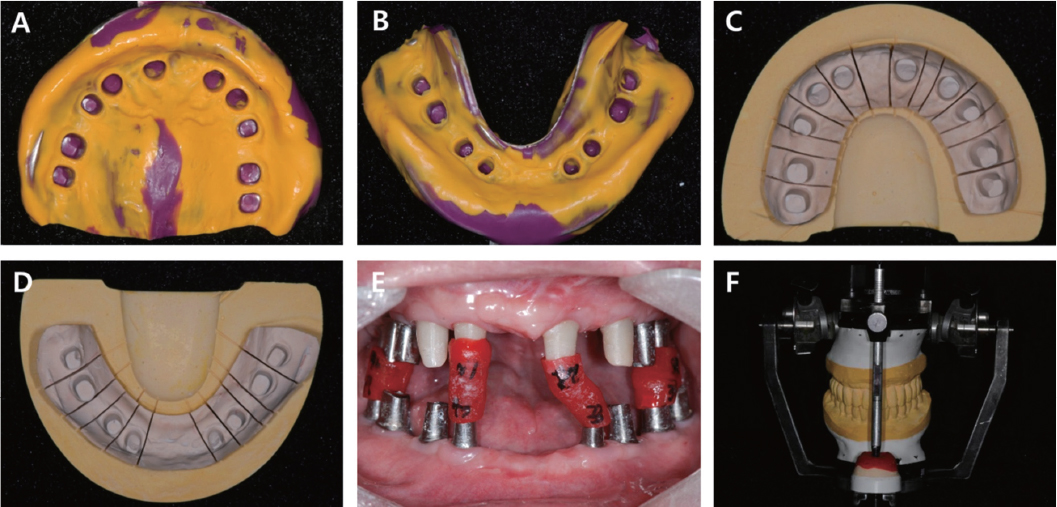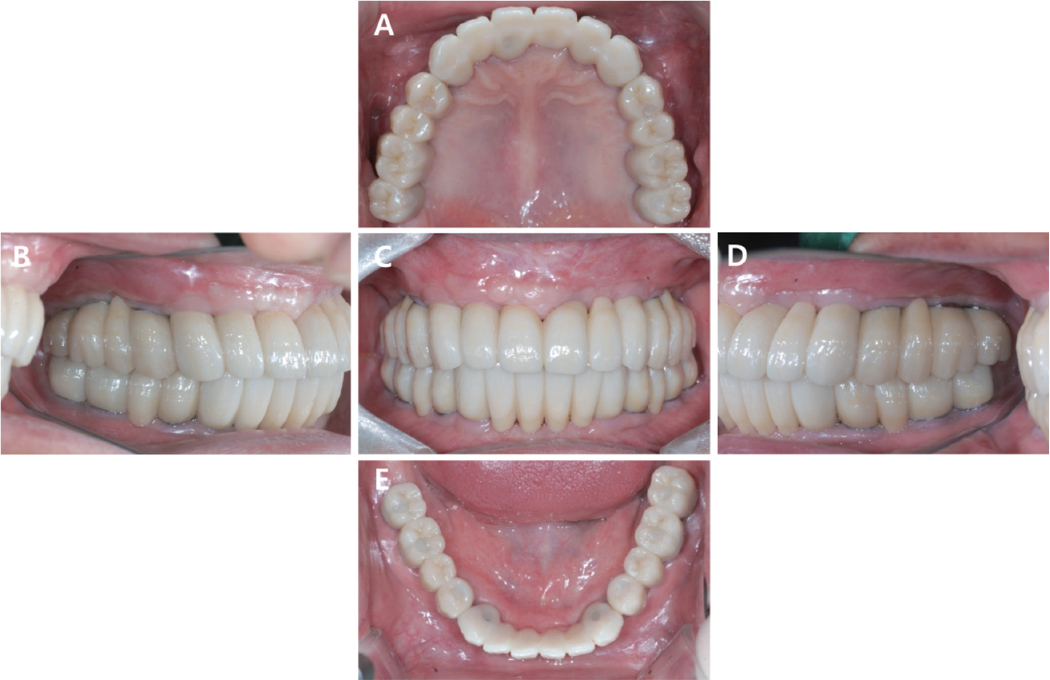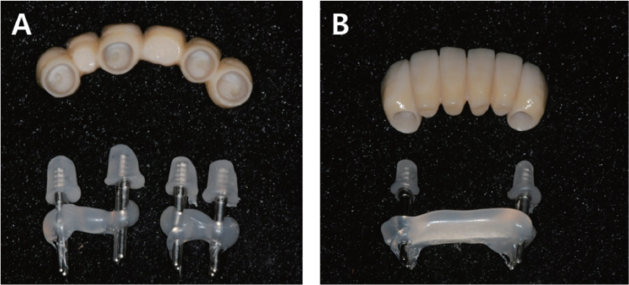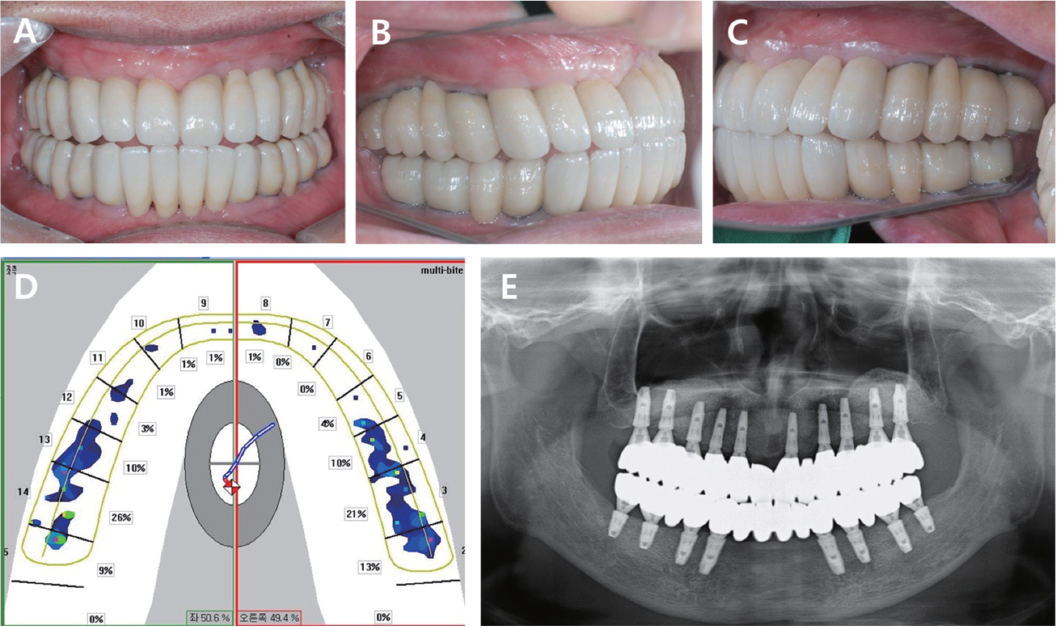J Korean Acad Prosthodont.
2018 Jan;56(1):77-87. 10.4047/jkap.2018.56.1.77.
Full mouth rehabilitation of fully edentulous patient with implant-supported fixed prosthesis preceding bone graft: A case report
- Affiliations
-
- 1Department of Prosthodontics, School of Dentistry and Institute of Oral Bio-Science, Chonbuk National University, Jeonju, Republic of Korea.
- 2Department of Dentistry, School of Medicine, Eulji University, Daejeon, Republic of Korea. dentka@eulji.ac.kr
- KMID: 2402991
- DOI: http://doi.org/10.4047/jkap.2018.56.1.77
Abstract
- Prosthetic treatment using implants in fully edentulous patients includes implant-supported fixed prosthesis, implant hybrid prosthesis, implant retained- or supported-overdenture and implant supported fixed prosthesis has advantages such as psychological stability, pronunciation. If an implant supported fixed prosthesis is planned, the implants should be placed in consideration of pronunciation, esthetics, and oral hygiene. For this, clinical and radiological diagnosis is indispensable. When placing the prosthetic driven implant at the site determined from the diagnosis, a sufficient amount of alveolar bone and soft tissue support are required. If these requirements found to be insufficient, a wide range of bone grafting should be performed in advance. In this case, a fully edentulous patient with severe alveolar bone resorption due to periodontal disease was treated with a full mouth rehabilitation using implant-supported fixed prosthesis preceding maxillary sinus graft and alveolar bone augmentation. We report this patient were satisfied with esthetic and function.
Keyword
MeSH Terms
Figure
Reference
-
1. Misch CE. Dental implant prosthetics. 1st ed. Mosby;2004. p. 43–52.2. Pozidi G, Lamprinoudi A, Papavasileiou G, Kamposiora P, Pallis D. Implant rehabilitation of the edentulous maxilla. A case series of different treatment options. Clin Oral Impl Res. 2016; 27:389.3. Gallucci GO, Bernard JP, Belser UC. Treatment of completely edentulous patients with fixed implant-supported restorations: three consecutive cases of simultaneous immediate loading in both maxilla and mandible. Int J Periodontics Restorative Dent. 2005; 25:27–37.4. Beretta M, Cicci M, Poli PP, Rancitelli D, Bassi G, Grossi GB, Maiorana C. A retrospective evaluation of 192 implants placed in augmented bone: Long-term follow-up study. J Oral Implantol. 2015; 41:669–674.
Article5. Lekovic V, Kenney EB, Weinlaender M, Han T, Klokkevold P, Nedic M, Orsini M. A bone regenerative approach to alveolar ridge maintenance following tooth extraction. Report of 10 cases. J Periodontol. 1997; 68:563–570.
Article6. Albrektsson T, Zarb G, Worthington P, Eriksson AR. The long-term efficacy of currently used dental implants: a review and proposed criteria of success. Int J Oral Maxillofac Implants. 1986; 1:11–25.7. Hürzeler MB, Kirsch A, Ackermann KL, Quiñones CR. Reconstruction of the severely resorbed maxilla with dental implants in the augmented maxillary sinus: a 5-year clinical investigation. Int J Oral Maxillofac Implants. 1996; 11:466–475.8. Misch CE. Contemporary Implant Dentistry. 3rd ed. St. Louis: CV Mosby;2009. p. 367–388.9. Seo CW, Han AR, Seo JM, Lee JJ. A technique for fabricating abutment replica with hot melt adhesive material to minimize residual cement in implant restoration: a case report. J Dent Rehabil Appl Sci. 2016; 32:240–245.
Article10. Sadowsky SJ. The implant-supported prosthesis for the edentulous arch: design considerations. J Prosthet Dent. 1997; 78:28–33.
Article11. Henry PJ. An alternative method for the production of accurate casts and occlusal records in osseointegrated implant rehabilitation. J Prosthet Dent. 1987; 58:694–697.
Article12. Assif D, Marshak B, Schmidt A. Accuracy of implant impression techniques. Int J Oral Maxillofac Implants. 1996; 11:216–222.
Article13. Vigolo P, Fonzi F, Majzoub Z, Cordioli G. An evaluation of impression techniques for multiple internal connection implant prostheses. J Prosthet Dent. 2004; 92:470–476.
Article14. Cheng CW, Chien CH, Chen CJ, Papaspyridakos P. Complete-mouth implant rehabilitation with modified monolithic zirconia implant-supported fixed dental prostheses and an immediate-loading protocol: a clinical report. J Prosthet Dent. 2013; 109:347–352.
Article15. Baldissara P, Llukacej A, Ciocca L, Valandro FL, Scotti R. Translucency of zirconia copings made with different CAD/CAM systems. J Prosthet Dent. 2010; 104:6–12.
Article
- Full Text Links
- Actions
-
Cited
- CITED
-
- Close
- Share
- Similar articles
-
- Full mouth rehabilitation of edentulous patient with fixed implant prosthesis
- Full mouth rehabilitation of fully edentulous patient using implant hybrid prosthesis
- Full mouth implant-supported fixed prosthesis restoration of an edentulous maxillary patient using computer-guided implant surgery
- Full mouth rehabilitation of mandibular edentulous patient using implant hybrid prosthesis
- Implant-supported fixed prosthesis restoration of fully edentulous patient using computer-guided implant surgery and immediate loading: A case report

